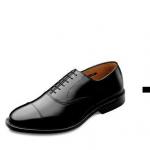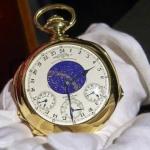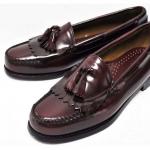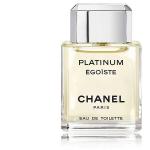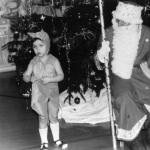Born in a shirt - a guide to men's shirts
The history of the men's shirt dates back to early antiquity: its oldest analogue dates back to the reign of the first dynasty of the Egyptian pharaohs several millennia BC. In the Middle Ages, the shirt was an exclusive rarity, in the Renaissance - a luxury item of the upper classes. White shirts with wide collars were worn under men's doublets with slits on the sleeves, through which the shirt protruded in the form of decorative gathers. In the 17th century, according to the English fashion historian Joseph Strutt, the shirt, as in previous decades, was still an element of pajamas and underwear, and it was considered bad form in Europe to use it in everyday wardrobe.
The basis of the modern urban wardrobe, the men's shirt has an unquestioned reputation as a universal piece of clothing for all occasions. How successful the image as a whole will turn out largely depends on the right shirt, because the shirt is a kind of link between all the other elements of the bow. In this article, we have tried to take into account all the nuances to make your choice of shirt unmistakable.
The history of the men's shirt
Until the middle of the 19th century, the shirt was worn as outerwear only by representatives of the poor working classes, however, starting in 1860, thanks to the famous Italian revolutionary Giuseppe Garibaldi, whose traditional red shirt gained worldwide fame, the shirt became popular with a wider audience.
By the end of the century, dictionaries described the standard shirt as a cotton garment with a linen shirt-front, starched cuffs for stiffening, and a detachable collar. The first mass production of casual men's shirts with the usual button placket in front appeared in the United States at the beginning of the 20th century. A few years later, classic white and sky blue shirts have become an invariable attribute of every gentleman.
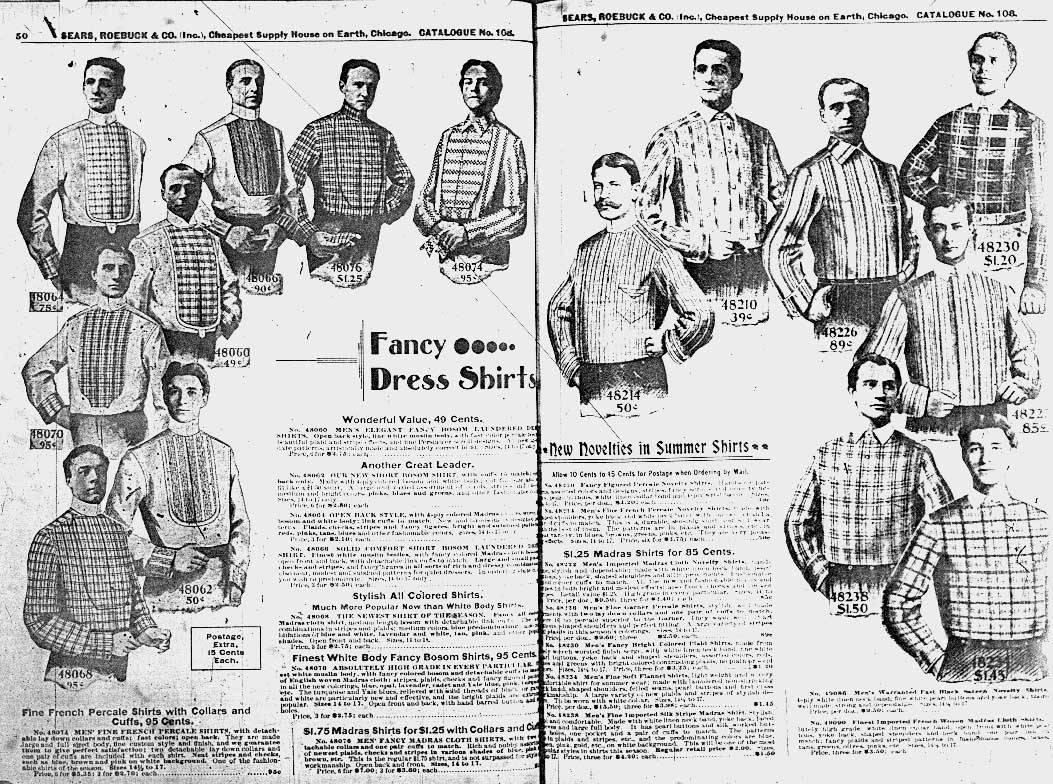 |
Types of men's shirts
- Men's classic (formal) shirt
Classic men's shirts are usually made from thin cotton plain Oxford fabric in white or blue colors and cut using closed seams without overlock. Sometimes they have a small pattern: a narrow strip, a simple cage "tattersall" (tattersall) or a small traditional English checkered pattern "gingham" (gingham).
A mandatory dress code for a classic shirt is a tie or bow tie. In an average business wardrobe, ties are significantly superior in quantity to shirts, so the absence of a pronounced ornament in the latter is the best solution that makes it easier to choose proven combinations.
The presence of a tie also determines the design of the turn-down collar of such a shirt: reinforced with elastic plates to stiffen it, it steadily holds its shape, tightly fixing the tie around the neck. The style of the collar is quite large, designed for a large tie knot.
In contrast to the narrow patterns of a jacket, classic shirts most often have a loose, straight cut and a slightly elongated hem, because. they are usually tucked into trousers. A shirt for a formal occasion must certainly be without pockets.
In the Merc assortment, formal shirts are extremely rare: in strict bows they are replaced by classic-styled monochromatic casual style models. They are fully consistent with business etiquette, but can be used in a less binding way.
- Men's casual shirt
This type of shirt is relatively difficult to separate into a separate group with its inherent design and design features. These shirts are truly versatile and can fit a variety of wardrobes - from strict to casual. Stylish and practical at the same time, they are equally suitable for a business meeting or an informal evening in an English pub.
Casual style shirts, as a rule, are made of cotton fabric with an all-over print (from large tartan to small polka dots), have a fitted cut and a neat, often shortened collar. Unlike classic shirts, their cuffs are usually fastened with buttons and only in rare cases involve cufflinks.
A casual shirt can be worn tucked in or loose, paired with denim, a leather bomber jacket or a Harrington. Following the reference image, such a shirt should be fastened with all buttons, including the top one.
What to wear?
There are practically no restrictions. Discreet options can be easily combined with a suit and derby shoes, while shirts with a more visible pattern are brilliantly combined with loafers, jeans, thin or bulky knitwear. When combined with a sweater, it is important to consider the type of collar, which will be discussed a little later.- Ceremonial men's shirt
This type of shirt is primarily characterized by a spectacular, memorable pattern, such as paisley (cucumbers), floral print or polka-dot (peas). Such a shirt can also be plain, but in this case it is decorated with a shirt-front, jabot or pleated. A dress shirt should be fitted: in the midst of a celebration at an aperitif or at a club afterparty after a fashion show, you may want to take off your jacket: you can hardly score points for good taste by exposing a sloppy fold hanging from under the belt.
Like classic shirts, dress shirts usually have a figured hem, the back of which is longer than the front - for more reliable tucking into trousers.
Such shirts are often worn with bow ties, so they should not have breast pockets, and the collar should be stiff enough, with the edges slightly turned to the side. If the occasion is not too obliging, a small or medium-sized butterfly will look more elegant.
In fact, dress shirts are a generalized group, including both tailcoat shirts for a lavish wedding or dinner party, and close to casual style, but more pretentious shirts for the opening of a fashionable veranda or theatrical premiere.
The choice of a shirt for a formal occasion is usually intuitive, but the generally accepted standards for such a dress code should not be neglected. For example, the edges of the collar should always be covered by the lapels of the jacket, and the tie knot should fit clearly in the triangle between them.
Styles of men's shirts:
- Fitted men's shirts
Fitted shirts, first of all, are focused on taking on the role of an independent element at any time. Such a shirt can become the compositional center of any bow, so its cut should be approached extremely demandingly.
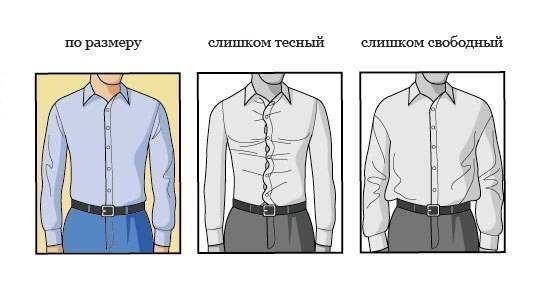
If, for example, you plan to wear a shirt without knitwear under a mac, pea coat or trench coat, then choose the most fitted cut, while paying attention to the fact that the shirt does not have large folds in the latissimus dorsi and does not diverge in the area of the upper buttons on the placket front. If the shirt is tucked into trousers, then the fold should not be behind the bottom line of the belt.
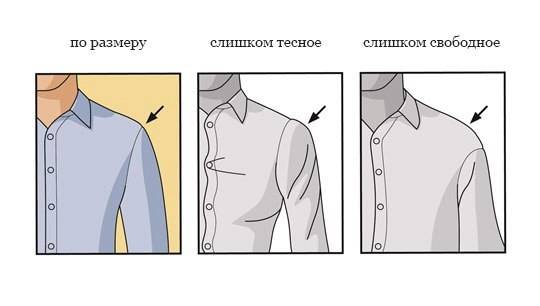
● Straight (loose) shirts
Straight shirts are most often classic. The cut hidden by the suit is not as important to them as the right collar. You should never wear a straight-cut shirt, and it's best not to wear one without a jacket or basic cardigan.
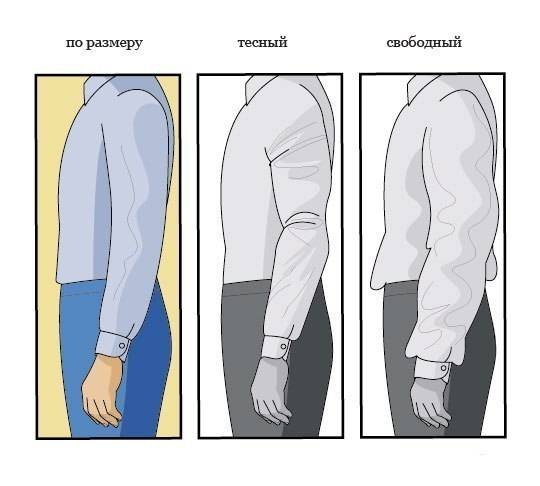
- Straight hem shirts
There are no clear demarcations that require such shirts to be worn tucked in or loose - it all depends on the cut and length of a particular model. Straight bottoms usually have universal basic casual shirts that create a fairly strict look in any environment.
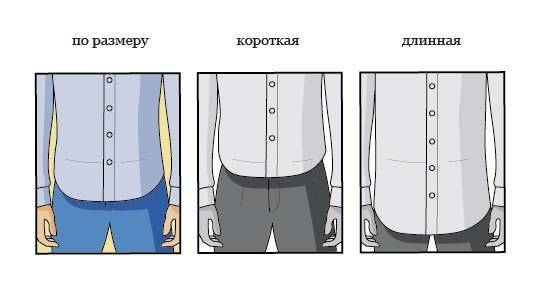
● Shirts with figure bottoms
It is generally accepted that such a design is specifically designed for refueling, because. especially for this purpose, its back part is slightly elongated compared to the front. Indeed, this style has some advantages if you are used to tucking in a shirt, but it is also no less appropriate if you wear it outside, providing a smooth transition from the top of the bow to jeans and shoes.
At the same time, you should think carefully before tucking a shirt into jeans, if a jacket or knitwear is not supposed to be on top - not every shirt in this image is quite harmonious. Striped shirts usually look good tucked into jeans, but a check in this case may look like a not-too-relevant country style. If we talk about chinos, then for dressing it is better to choose a more strict, taut style on a standard waist. The free version is less suitable for this, unless, of course, you want to look like a Cossack from the Zaporozhian Sich.
And, of course, under no circumstances should you wear a T-shirt under your shirt, and even more so an alcoholic - this is an unambiguous bad manners.
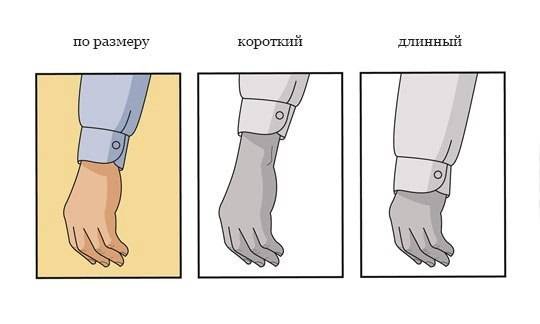
Men's shirt sleeve length
According to a common misconception, the sleeves of a shirt must necessarily be long, right down to the base of the thumb. Ideally, the sleeve, according to etiquette, ends on the line connecting the forearm and hand: this length allows the cuffs to half hide the watch face and look out from under the jacket by 1-2 centimeters.
If a watch and a jacket are not about you, then you should not pay too much attention to the length of the sleeves - it does not deserve it.
- Men's short sleeve shirts
Men's short sleeve shirts are a more formal alternative to the polo shirt for a casual wardrobe or an element of a formal look in the hot season. There are different opinions as to whether such a shirt is completely appropriate for the office in combination with a business suit. In our opinion, she is absolutely born for this role. Other utilitarian benefits of a short-sleeved shirt include a comfortable pairing with knitwear.
Types of fabrics for men's shirts:
|
A dense cotton or blended fabric with a rough texture, consisting of tiny, staggered white squares - this effect is achieved by using a finely patterned weave "gunny" weave. This comfortable, noble and breathable material began to be used in England at the end of the 19th century for sewing sports shirts worn by polo players, and half a century later, such shirts became part of the wardrobe of the university Ivy League - the founder of preppy style. Oxford shirts are less formal. Most often, these are casual shirts with a button-down collar. They pair well with tweed smart casual blazers, varsity blazers and Monkey Jackets, basic jerseys with crew necks or V-necks, as well as brogues and loafers. A smoother version of this material - Royal Oxford - would be appropriate in combination with a classic suit and a silk tie.
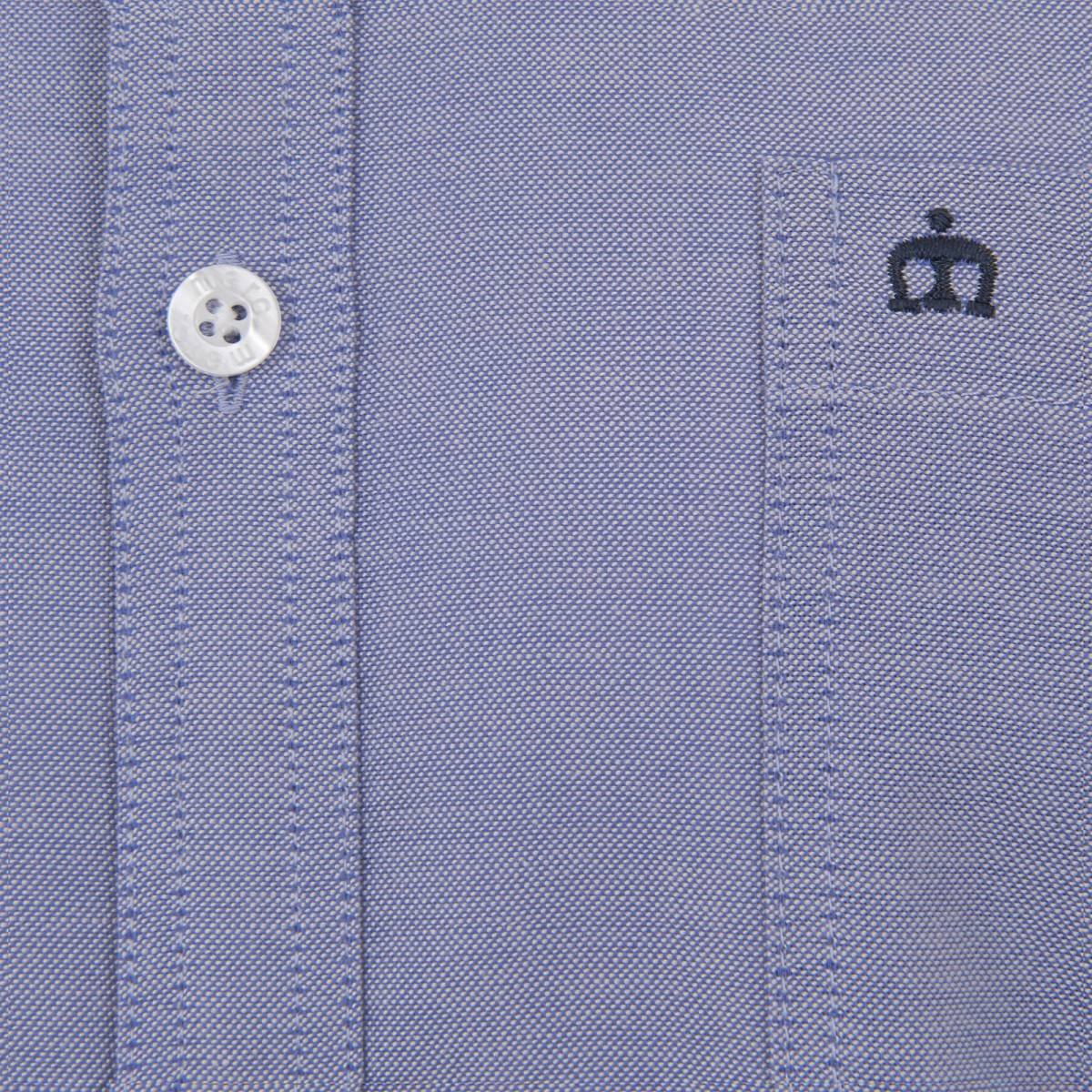
The most popular shirting fabric with a simple weave in the smallest transverse rib. Most shirts are made from it - from classic (for suits) to formal and everyday models. This is a soft and smooth material, but at the same time quite strong and very wear-resistant. It tolerates washing well and does not wrinkle, which makes it extremely practical and long-lasting. Other advantages include lightness and hypoallergenicity.
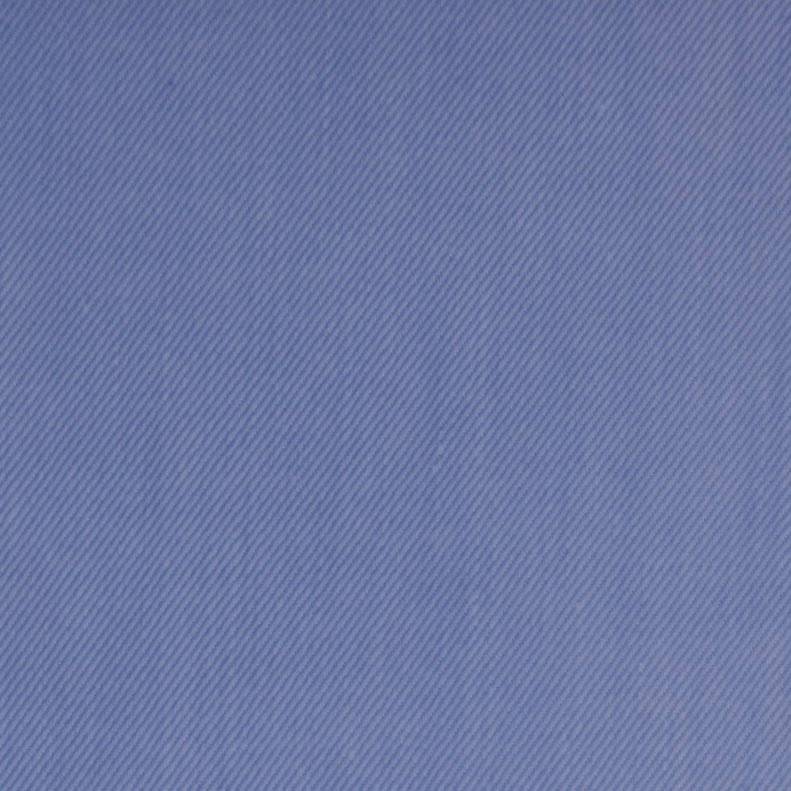
Dense and durable, with a diagonal structure, cotton material, made in twill weave. In fact, twill is a cotton variety of tweed, also of British origin. The textured surface of this fabric, comfortable and pleasant to the touch, makes the pattern of the shirt voluminous and rich, giving the product a noble and status look. Business plain shirts are made from twill, as well as checkered shirts for a casual wardrobe. Twill is resistant to deformation and does not wrinkle, it is durable, unpretentious in care, having good air exchange and heat-insulating properties.
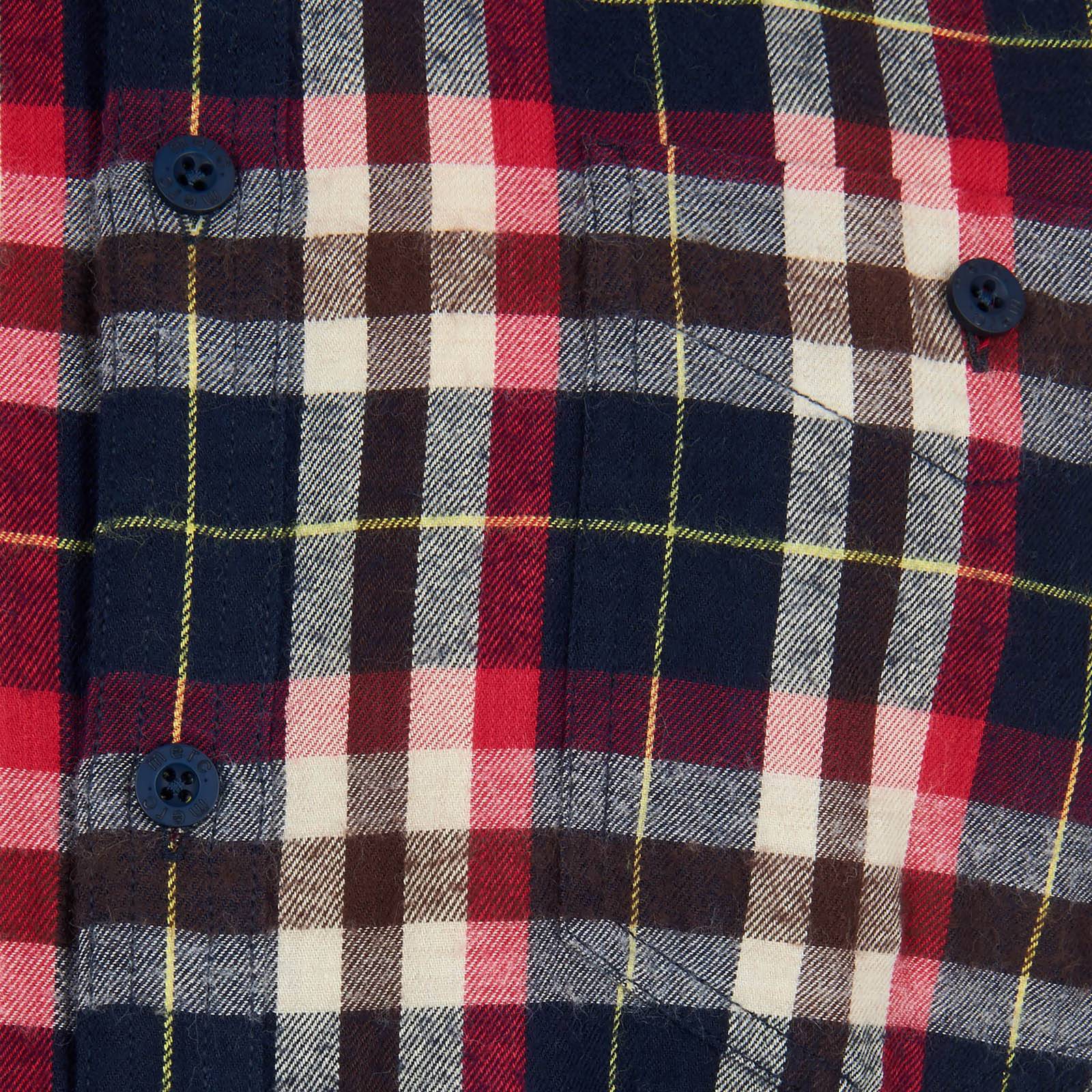
|
Thick twill weave with a distinctive herringbone pattern. This material has a relief surface, however, the texture of such a fabric is smoother than Oxford, which makes the shirt made from it more strict and elegant. Solid white and blue herringbone shirts go well with suits, but can also be worn with jumpers, pullovers, cardigans and jeans.
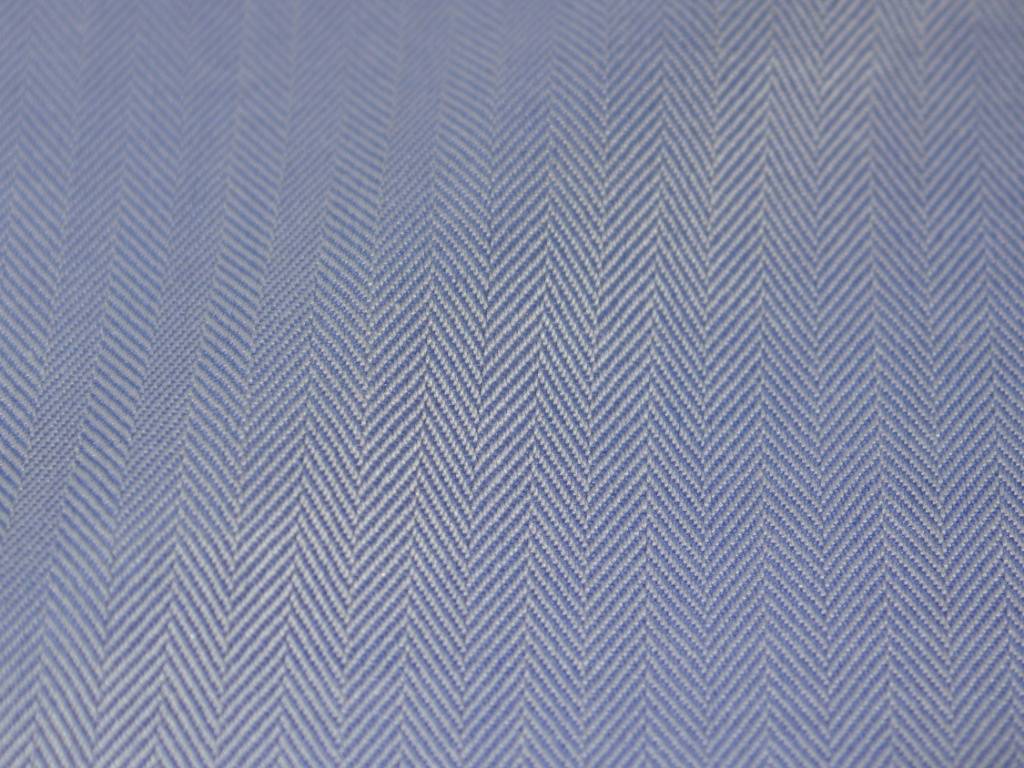
Soft to the touch, fleecy fabric based on cotton or wool, which today is most often used for tailoring shirts popular in the modern environment in a large American cage lumberjack plaid or otherwise buffalo check (originally - the family tartan of the oldest Scottish royal clan MacGregor, whose descendants moved overseas and popularized this ornament in the USA in the 18th century). Plaid flannel shirts go well with denim, parkas, backpacks, all kinds of work boots like Yellow Boots, and, of course, beards and barbeshop haircuts.
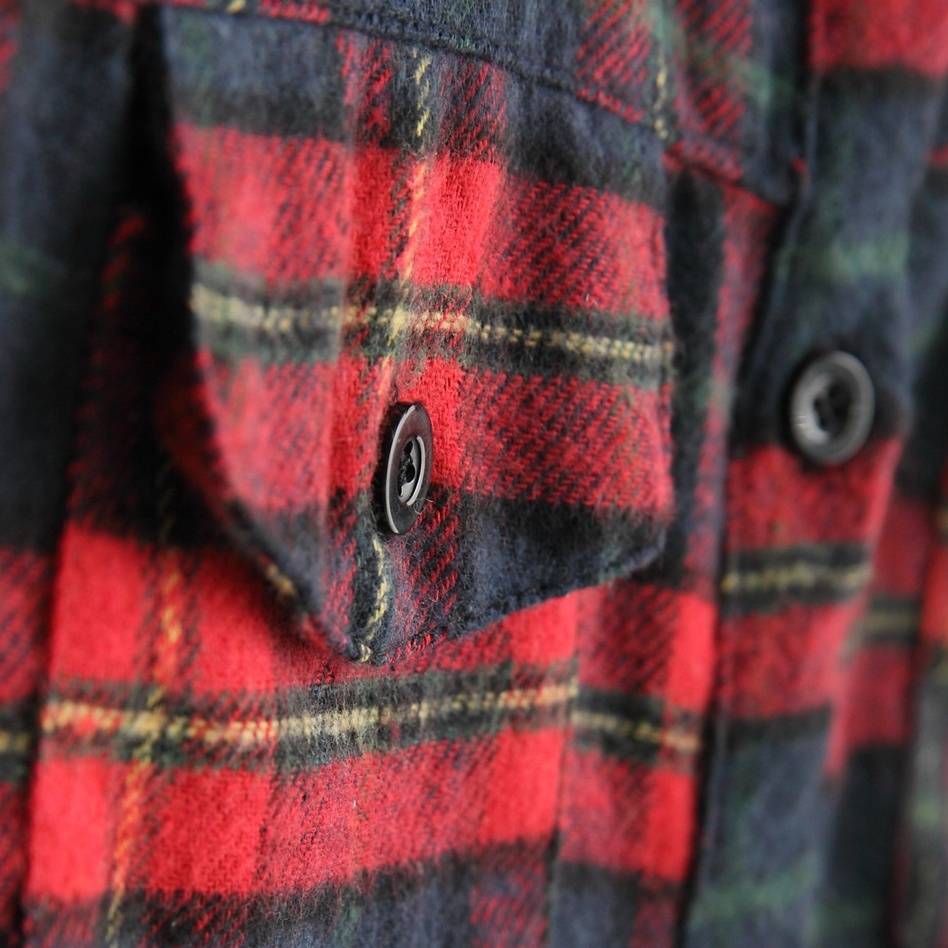
The main patterns of men's shirts:
The history of each of the patterns described today can become a topic for a separate article, but within the framework of this material, we will focus on the compatibility of one or another shirt ornament with other items of men's wardrobe.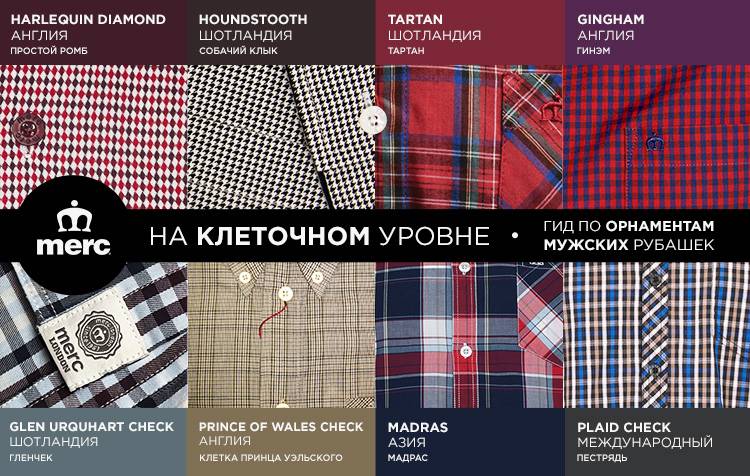
Cage Tartan (Tartan)
There are many varieties of this native Scottish clan-territorial ornament. In its design, Merc traditionally uses one of the most recognizable "mountain" tartans - the red Royal Stewart tartan of the Scottish royal Stewart dynasty (it is also the personal tartan of the British Queen Elizabeth II), as well as its "plain" version in blue - Glen Stewart. The Stuart cage is a spectacular, but at the same time, a classic ornament, which can be accentuated to dilute a monochromatic top, for example, a strict black suit, or worn as an independent element.
Tartan shirts go well with both woolen and textile trousers, as well as dark denim. The best shoes for them are brogues, deserts and chelsea. Red tartan looks great with black jersey, respectively, blue - with blue (or "royal blue"), green and brown.
Dogtooth cage (dog fang, goose foot)
A noble, usually small black and white houndstooth pattern is the perfect pair for black, brown, blue and dark gray knitwear, a suit or an elegant crombie coat. A shirt with such an ornament is not striking, it is easy to match a tie, so dogtooth is good to use as part of a formal wardrobe.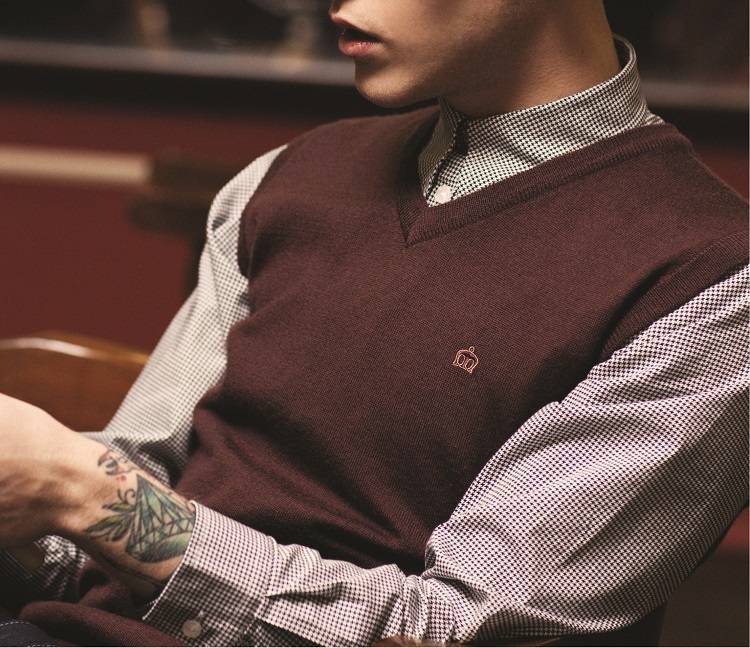
Cage Plain
A relatively wide checkered pattern, made up of a symmetrical or asymmetrical interweaving of cells of different colors and sizes, easily fits into almost any casual bow. In order not to miss the combination, it is better to choose a cage in a single color scheme with the upper part of the outfit, however, it may well act as a contrast: in this case, the coincidence of its individual tones with the color of the cardigan, parkas and shoes will be especially successful.Prince of Wales cage
A strict classic pattern is relatively rare for shirts (most often trousers and jackets are made from such a fabric). Pairs well with a tweed suit or vest, trench coat and duffle coat.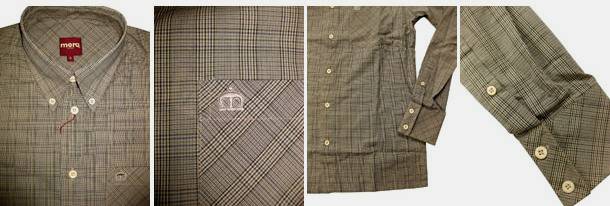
Paisley (pasley, cucumbers)
A timeless shirt pattern, pasley is an iconic attribute of the dandy look, especially often decorating spectacular foppish-style shirts. Depending on the color, frequency and size, paisley is combined with a wide palette of top and trouser wardrobe items - from strict classics and seasoned smart-casual style to grated denim and fancy leather jackets. If you chose a pasley shirt, then a narrow tie with an identical pattern will be a special chic in addition to it.Strip
A widespread type of classic pattern, often associated with elite sports such as yachting or golf. Not always perfect with knitwear, striped shirts have been unnecessarily forgotten in recent times, although they are perfectly combined with a plain jacket or worn out with chinos and loafers.Polka-dot (polka dot, peas)
A classic ornament for men's shirts on the verge of mod-look and smart casua styles. In many ways, this disposition depends on the frequency of the pattern: the more thinned the peas, the more dashing the shirt looks. A shirt with solid polka dots can be safely worn to the office, but if you accidentally find yourself in it in a theater box for guests of honor, you will feel like a true dandy here. A rare polka dot shirt is best for a nightclub or fashion presentation.Geometric prints
Patterns depicting regular geometric shapes, whether it is a triangle, three-dimensional crystal or squares, are a reference to the modernist style of the 60s era and its today's reading in the spirit of modern retro. These shirts work well in a wide variety of looks, easily combined with a quilted cropped jacket, twill coat, chinos, and more formal wardrobe items.Types of collars for men's shirts
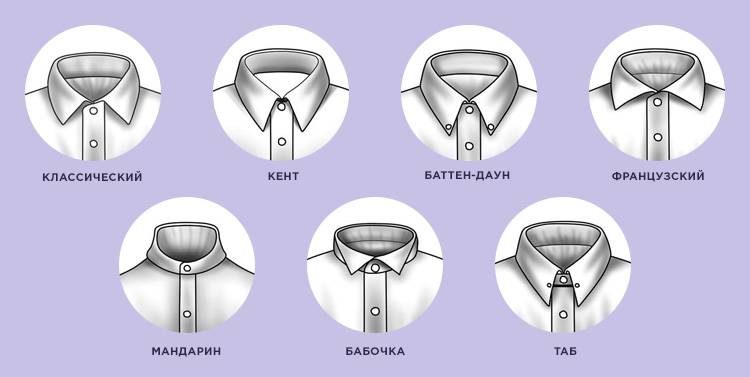
- Classic collar
This fold-over collar with pointed and slightly flared ends is the ABC of formal style, and can be combined universally with ties and bow ties of any style. Elastic polymer plates sewn into the collar allow it to keep its shape well. Another variation of the classic, the so-called Italian collar, is slightly wider and longer, and its outer sides, closer to the tips, have a slight bend. Classic-collared shirts are worn primarily under a suit, but can also be worn with a less formal dress code, such as a button-down wool cardigan or a crew-neck sweater.
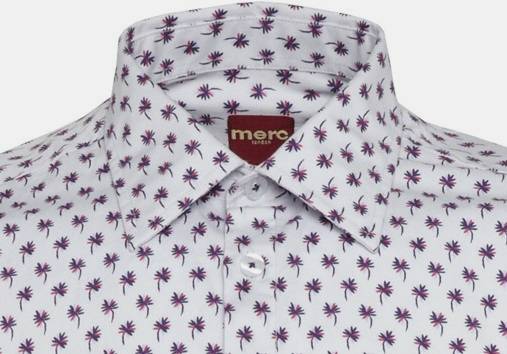
- Button-down collar
Fastened to the base with small buttons, this neat collar with down and slightly outward-facing edges leaves enough room for a thin tie or small bow tie and also pairs perfectly with V-knitwear. Keeping its original shape even after washing, it is equally suitable for a crew-neck sweater, a shallow-neck vest or an open cardigan with a cropped button fastening. Batten down can most often be found on casual style shirts, in particular, such a collar is typical for most shirts of the Merc-Core base line.
- Collar "Kent"
One of the most common types of collar, Kent, which in some sources appears as Oxford (Oxford point, Oxford Point Collor), can also be called the most versatile: like the classic, its edges are turned down, but the angle formed between them is sharper. Such a collar goes well with any business suit or V-neck sweater, the only significant limitation is that the tie knot should not be chosen too massive. In numerous interpretations of the Kent collar, its length, width, and also the sharpness of the angle formed by its halves vary. This collar is completely self-sufficient, so it is often found in casual shirts worn outside.
- Collar "Tab"
A beautiful high turn-down collar, the ends of which fit snugly against the stand, the Tab gives the shirt a noble and very significant look. Sometimes, for a snug fit, the edges of such a collar are fastened with a small rectangular jumper. A shirt with a tab collar fits perfectly into a casual casual bow without a tie, but with a buttoned top button - in combination with a deep neckline of a sweater, vest or cardigan. 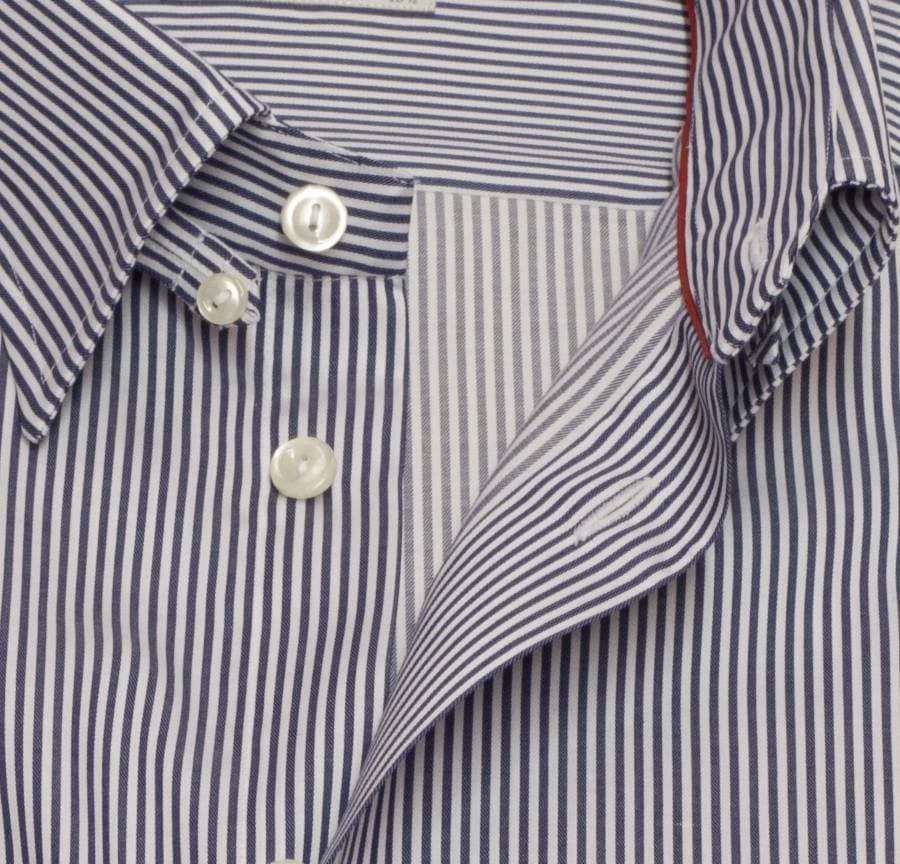
- Eton collar
A wide turn-down collar with rounded ends, named after the famous Eton College, a private British school for boys that has produced twenty prime ministers of Great Britain since the 15th century. In its origins, this collar is an attribute of preppy style: accordingly, it will go well with a fitted preppy-look sports jacket, an English cardigan with several leather buttons, chinos and loafers.
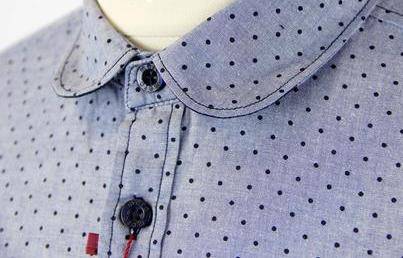
- Collar "Butterfly"
This stand-up collar with elongated and pointed ends, set aside at an angle of 45 °, has a highly specialized purpose and will certainly be combined with a bow tie or escot (it is also a plastron, a men's neckerchief tied with a decorative knot and laid behind a vest from a suit - triplets). A shirt with such a collar is designed for special occasions and is worn with a tailcoat, tuxedo or troika.
- Collar "Mandarin"
A low stand-up collar without turn-down edges in the form of a narrow fabric strip, tightly fitting the neck, "mandarin" is traditionally combined with a jacket (a man's jacket with a similar stand-up collar), but can also be an element of a casual shirt, combined with a light jacket or mac. 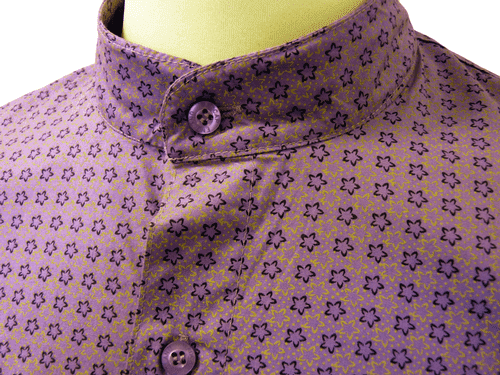
Posted By Merc Russia on 3 Feb 2015

